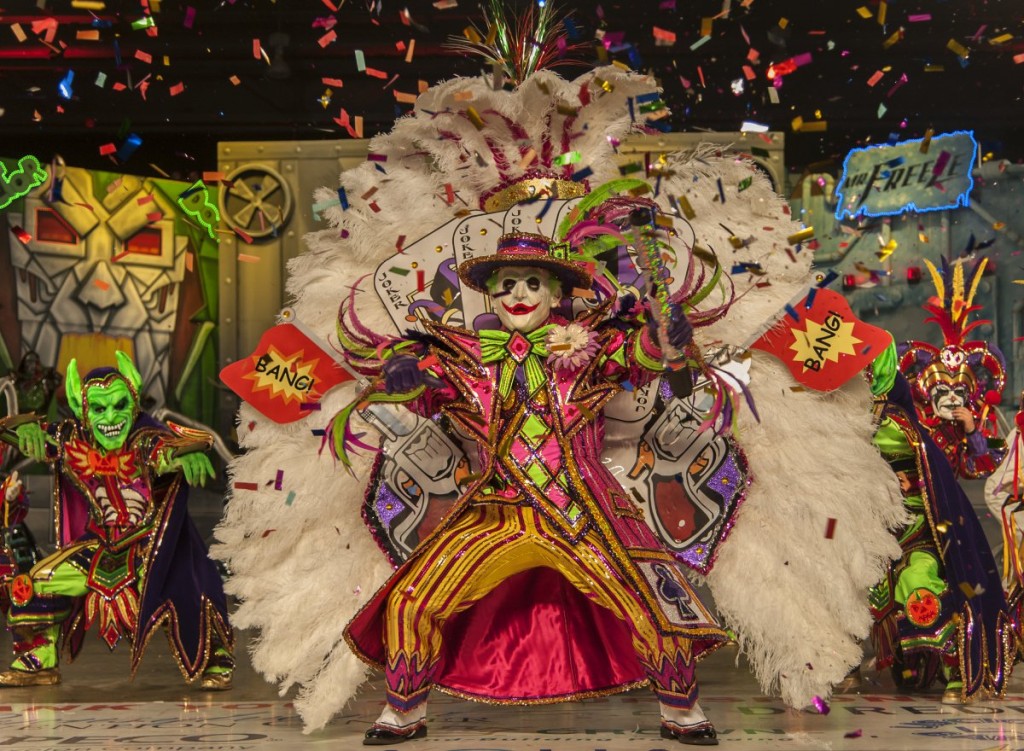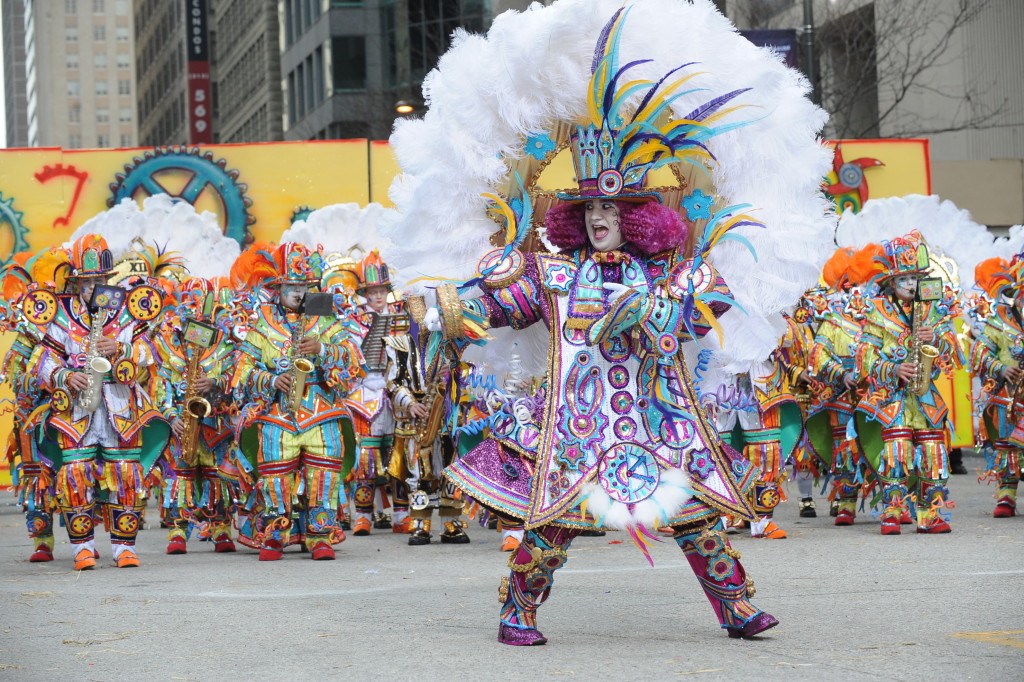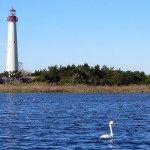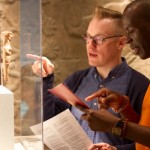 Anyone who has lived near Philadelphia is well-aware of the traditional Mummers Parade that happens every year on New Year’s Day. Adults clad in flamboyant costumes resembling an extraordinary hybrid of peacocks and circus clowns gallivant down the streets playing stringed instruments. Tens of thousands of “mummers” march in the parade and spectators gather in crowds numbering in the hundreds of thousands. Perhaps if you’ve witnessed this spectacle or seen Mummers in any other parade you’ve wondered how the idiosyncratic tradition came to be.
Anyone who has lived near Philadelphia is well-aware of the traditional Mummers Parade that happens every year on New Year’s Day. Adults clad in flamboyant costumes resembling an extraordinary hybrid of peacocks and circus clowns gallivant down the streets playing stringed instruments. Tens of thousands of “mummers” march in the parade and spectators gather in crowds numbering in the hundreds of thousands. Perhaps if you’ve witnessed this spectacle or seen Mummers in any other parade you’ve wondered how the idiosyncratic tradition came to be.
The Philadelphia Mummers Parade is actually believed to be the oldest folk festival in the United States. It traces its roots all the way back to medieval Europe. Swedish and Finnish settlers, the first Europeans to colonize in the 17th Century what is now the Philadelphia area, were the originators of the custom in the New World. They brought with them the Scandinavian custom of going door to door visiting neighbors in the days following Christmas. In New Sweden, which included much of South Jersey, Delaware and parts of Pennsylvania, the tradition grew into large parades through the streets. The parades became extremely popular among the working class throughout many towns. As many German immigrants began settling in the area, the parades came to incorporate the German Christmas tradition of costumed adults asking local children if they had behaved during the previous year and the New Year’s tradition of shooting firearms in celebration. The costumed revelers would also put on skits, sing songs, play instruments and recite poetry as they paraded from house to house in the streets. Both observers and the occupants of the homes would reward the “mummers” with treats and libations. The paraders would also visit local taverns to entertain the patrons while seeking free drinks. One popular poem which was sung or recited goes:
“Here we stand before your door,
As we stood the year before;
Give us whiskey, give us gin,
Open the door and let us in
Open the door and let us in,
Or give us something nice and hot,
Like a steaming bowl of pepper pot”
The mumming tradition became increasingly popular as a New Year’s Day celebration and continued to grow following the American Revolution. George Washington himself even participated in the parades during his Presidency, as Philadelphia was the nation’s capital at the time.
By the early 1800s, the New Year’s custom continued to thrive among the working class of Philadelphia and the surrounding areas. Parades and plays were staged by the costumed carousers. Since the parades were rowdy affairs that included loud musical instruments, shooting off firearms, mass consumption of alcohol and often poked fun at the aristocratic ruling class, local governments became displeased with the celebrations. Rules were passed to crack down on the merriment, with punishments such as fine and imprisonment for mummers. The ban was never very effective in sopping the popular parades but it did increase the need for costumes and disguises which became much more ornate. Mummers continued the parades clandestinely some time. The ban was officially repealed in the 1850’s.
As the 19th Century unfolded, the parades which had previously been very impromptu and haphazard became a much more organized ritual. Mummers participating in the parades were divided into two distinct categories; “Fancy Dressers,” who sported elaborate costumes with lots of elaborate, decorative plumage and the “Comic Club” who donned humorous regalia inspired by clowns and minstrels.
In 1901, Philadelphia held it’s very first officially recognized Mummers Parade on New Year’s Day. This means the Mummers Parade has been Philadelphia New Year’s institution for 115 years. However, mummers are not confined strictly to Philadelphia. South Jersey is also very fond of the tradition and mummers continue to be a staple of many parades around the state throughout various holidays.
Participating in mummers clubs that prepare all year round to strut their finery has become a tradition spanning generations for many South Jersey and Philadelphia area families. Although the Philadelphia event is the most popular and well-known, the Jersey Shore hosts large mummers parades around the 4th of July in Wildwood and Atlantic City. Wildwood also hosts a large mummers’ convention every June.
Currently, mummers are divided into four different specific categories. The aforementioned “fancy dressers” and “comic club” were the original two. The “comic club” are known for lampooning political figures and celebrities. They also often include floats in their processions and perform comedy sketches. The “fancy dressers” are all about glamour and aesthetic artistry. Their shows often include extravagant props and intricate choreography. Spectators might compare their performances to high art similar to an opera or ballet. 
Then there is the “String Bands.” While the other groups perform to recorded music, the “String Bands” play their own instruments while parading. They play not only string instruments but also saxophones, accordions and glockenspiels. Instruments must strings, woodwind or percussion, no brass instruments are permitted. Known for their showmanship that rivals Broadway productions, Mummers String Bands do not allow professional musicians to join their ranks. Despite being amateurs their choreographed drills deliver incredible performances that amaze audiences.
The “Wench Brigade” are Mummers wearing old-fashioned dresses and bloomers with matching hats and slippers who are heavily made up carrying scarves or parasols. Often these wenches are men. Typically their shows involve themed pageantry. The Pirate Wenches, for example, are a notable Wench Brigade.
Mummers have kept up with technology since the colonial days of door to door performances. Philadelphia’s WPHL has televised a live broadcast of the Mummers Parade annually since 1993. The station even began streaming the parade on their website in 2011.
Mummers have become so synonymous with Philadelphia that a Mummers Museum opened up in the city in 1976, just in time to celebrate America’s bicentennial and mummers’ connection to George Washington and the American Revolution.
The Philadelphia Mummers Parade will happen again this New Year’s Day, starting near Dilworth Park then heading down Broad Street past City Hall ending on Washington Street.



